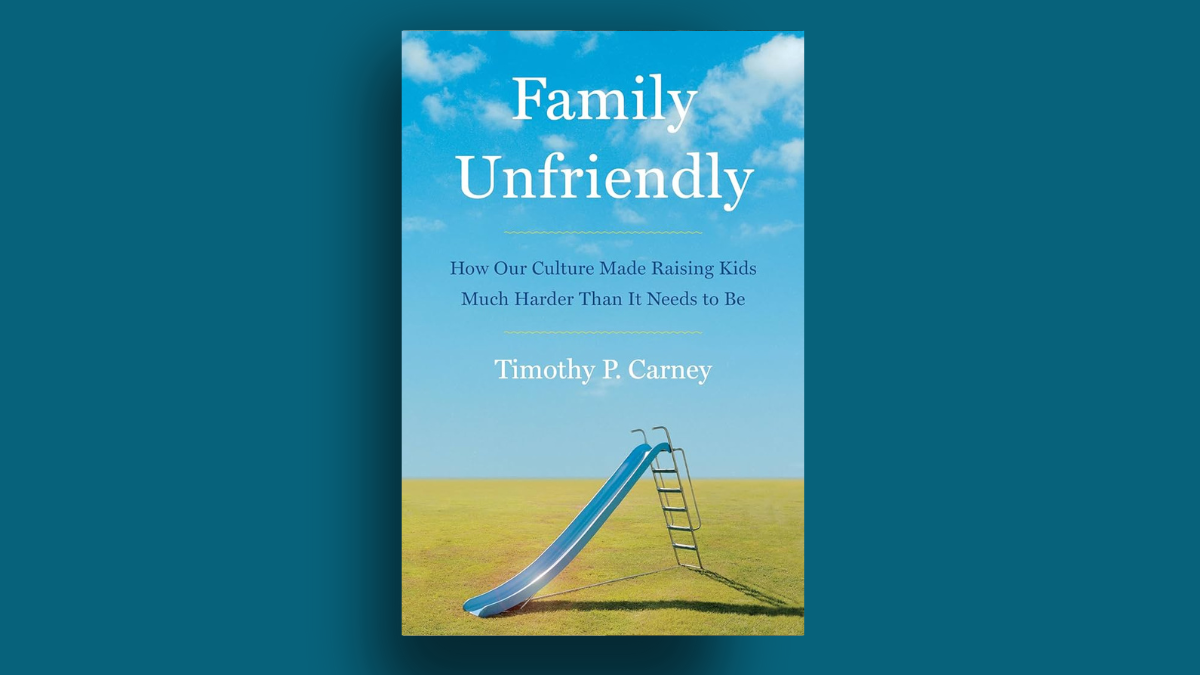The culture war is here and it is real. Everyone who drinks beer or shops at Target knows this, but not everyone knows how to fight, or where to aim fire. Our government, our schools, and our families are smoldering in the wreckage. What do we do now? What weapons do we have? Can somebody write down some instructions?
Peachy Keenan’s new book, Domestic Extremist: A Practical Guide to Winning the Culture War, is exactly that: an instruction manual. She’s certainly not the first or even the most recent anti-feminist writer to take part in the growing swell of literature addressing the decades of women’s regret, unhappiness, bad sex, and childlessness caused by the feminist movement, but she is the quickest to offer a precise counter-attack. Mary Harrington’s Feminism Against Progress and Mary Eberstadt’s Adam and Eve After the Pill, Revisited are two other thoughtful books released within months of Keenan’s that aid in laying out what an utter disaster the sexual revolution has been for both women and men.
But Keenan’s version stands apart in its accessibility, practicality, and ability to maintain a sense of humor about what is otherwise a rather grim situation, considering plummeting marriage and birth rates across Western countries. If we are all passengers on this aircraft that is our present dystopia hurtling toward a fatal crash, Domestic Extremist is the safety instruction brochure stuffed into the back of the seat pocket, except without the pictures, and much more entertaining.
Prairie Dress Not Required
Given the book’s “extremist” title, the cross-stitched rosary on the cover, and that Keenan is a self-professed Roman Catholic, I prematurely assumed her prescription for women who want to reclaim their femininity or are desperate to exit the corporate hamster wheel would be less pragmatic and more like what too-online Twitter folks know as the “tradwife” lifestyle. There are, of course, genuine, organic tradwives who are unaware the label exists, but there are also many red-pilled, online, self-proclaimed tradwives who sneer at feminism only to cosplay in 1950s housedresses while still single and childless. And don’t get me started on the crunchy homesteaders-turned-Instagram influencers who sell farm-raised beef with their husbands and homeschool their nine children — dreamy, but utterly unrealistic.
Contrary to the image the “domestic extremist” label might conjure, Keenan’s vision is for everyone and is relatively simple to obtain. Simple, but not easy.
“We can’t all buy farms,” Keenan writes. “Few of us are equipped or prepared for the off-the-grid dissident life, including me. Despite my inner domestic extremist, I’m still outwardly the same city slicker I’ve always been, more comfortable at a lively cocktail party than a barn raising. However, foundational female roles don’t require you to transform into a tradwife stereotype, or Ma Ingalls.”
Keenan contends that to be a “domestic extremist” in this day in age, you just have to be normal, or rather, what used to be considered normal not all that long ago. Have a monogamous marriage, ditch your birth control, have lots of babies, shun government schools and stay at home with them as long as possible, and by society’s standards you will be considered a “domestic extremist.” No sourdough starters or prairie dresses required. Revolutionary!
Again, it’s simple, but that doesn’t mean it’s easily done. To the extent that any tradwifery is necessary, it would be in emulating not their broods of children or perfect mass attendance, but primarily living a life defined by self-sacrifice. The domestic-extremist life is mentally and physically taxing at times, and Keenan acknowledges that “few people will be able to check every box.”
You Must Be Anti-Feminist
The first half of the book is a hilarious and devasting takedown of feminism and a cataloging of what the ideology has robbed women of. This is helpful for readers, mainly women, who cling to the silly idea that feminism has done some tiny ounce of good because they have the right to vote or something. Keenan takes no prisoners in spelling out why “feminism is the most incredible self-own of all time.”
“Being used like a rented mule on the weekends and then having to compare your own career success to not just other women, but men, too, has created a mental health crisis among women of all ages,” she writes in the chapter on how feminists took our happiness and spurred on women’s pharmaceutical dependence. Other things they took from us include but are not limited to our so-called gender, our fertility, our men, and our unborn children. The second half of the book is a guide on how to take it all back. Girlbosses, be warned.
The wind in the sails of Keenan’s culture war battle plan is her own origin story. A child of divorced parents and an atheist mother, her telling of her own conversion to a “domestic extremist” gives further credibility to her instructions for women looking for an escape boat, one that she nearly missed herself. Her sobering advice on the importance of avoiding cohabitation, marrying young, and jumping into parenting without looking back (“burn your ships”) is all the more convincing when you realize she’s speaking from her own mistakes as much as she is from what she got right.
Easier Said Than Done
I’d like to think that by Keenan’s standards, I’ve already achieved “extremist” status or am at least so far down the path there’s no turning back. I’m writing this review while on my third outfit change of the day because, on two separate occasions today, I’ve been vomited on by two different children. But despite being both affirmed and inspired by her ideas, I can’t shake that to some women who need more convincing, the instructions might be too simplistic for such a hefty problem.
All of us know women who have faced struggles such as infertility and the woes of the modern dating world (not for a lack of trying), so it almost seems insensitive to imply the only way to solve our problems is by everyone just getting married and making babies. Even for those who have gotten married and have two kids, getting to that third and fourth kid that she urges is an economic hurdle that many Americans are unable to overcome. While she does address the nefarious two-income trap — where even married women who long to stay home with the children are unable to because they can’t afford to live on their husband’s income alone — she doesn’t get specific when it comes to fixing the problem beyond more tax breaks for families.
Yet this unabashed challenge from her is also what makes the argument all the more compelling: The need is so dire, we can’t afford to tip-toe around it in fear of offending someone or write it off as an unattainable “luxury lifestyle.” Instead, Keenan argues that those who either can’t or won’t embrace the “extremist” lifestyle are all the more reason to demand others rise to the challenge.
“‘Not everyone can just have whatever number you think they should!'” she writes, as an example of a common counter-argument.
“Exactly. Not everyone makes it to the summit. Which is why more of you need to try.”









